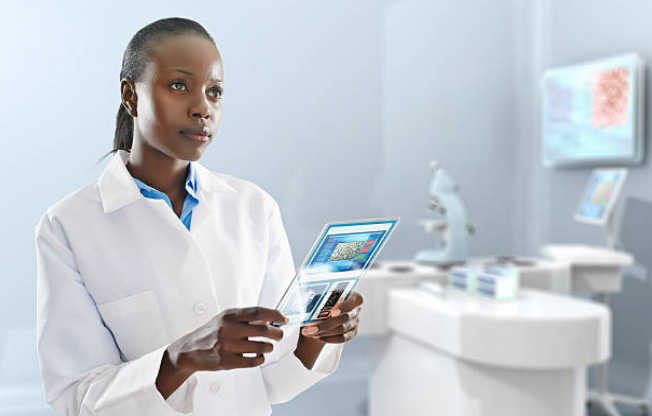The last decade has been the decade of LIMS for the pharmaceutical lab industry. The laboratory information management system (LIMS) has totally transformed how the labs of today are functioning. Be it scheduling of appointments or sharing of test reports, there is no aspect in lab functioning that has been left untouched by LIMS. For many years, the innovators in the industry have been trying to figure out the future of LIMS and its impact in the next ten years. Here is what has come to the fore…
 Labs are always evolving, from layouts to systems and processes – everything is changing. Robotics and machine based automation are making waves in the industry by eliminating mundane tasks and leaving employees to focus on core lab process development. With more and more focus on the lab of tomorrow, research is now opening doors for more innovation and opportunity.
Labs are always evolving, from layouts to systems and processes – everything is changing. Robotics and machine based automation are making waves in the industry by eliminating mundane tasks and leaving employees to focus on core lab process development. With more and more focus on the lab of tomorrow, research is now opening doors for more innovation and opportunity.
Over the five-ten years, there are no predictions that technology might change the industry by storm. But there are some major developments that are certainly taking place beneath the surface. Here are some of them;
Relevance of Cloud
Labs have been fast in picking up cloud based service providers as they realize legacy systems (old generation software) are costing them huge amounts of money to setup and service. Plus, all these things can be better taken care of by full time development companies that sign service contracts, agreements, maintenance, upgrades for the labs on the SaaS model.
Relevance of Easily Integrated Technologies
There was a time when LIMS was new and more companies with deep pockets were wanting to have best in breed software for their labs. Now it has all changed, with more and more modules to be integrated with the main software – clients are choosing systems that are easily integrated and device agnostic.
No more Keyboard
Voice recognition and touch pads are going to spell the doom for the keyboard like it happened in the case of mobile phones. With machines being able to understand scientific terminology, it’s only a matter of months the keyboard would become extinct in the lab.
Cheaper RFIDs
RFID or Radio Frequency Identification tags allow for automation. This means all equipment in the lab will be tagged with RFID tags that can communicate within themselves without the need for human intervention. Machine to machine communication is the key for automation in the future.
The Internet of Things reality
With RFIDs becoming a reality and the presence of tags becoming a norm, machine to machine communication will take to a completely new level meaning machines would be able to talk real time among themselves with the help of the internet. Records will be made, maintained, calibrated just by machines.
The labs of today are facing unique challenges and have a unique lookout to future opportunities. Technological advancement in the industry can only be predicted, there is no surety as to what technologies might find their way into the labs of tomorrow.
But what is sure to happen is that the modern day LIMS is here to stay and the future of LIMS is bright.
If you are a lab owner, manager or doctor and want to implement a cutting edge Laboratory Information Management System at your lab. Visit our website and know more about CARE LabTrak solution for the Labs of Tomorrow.
